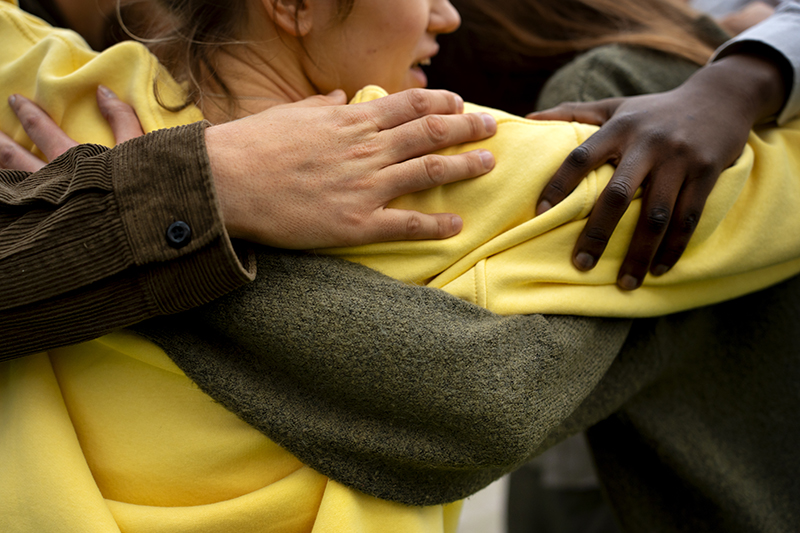
In this blog, we will explain the 4 attachment styles of Attachment Theory, as it can help us understand some of the difficulties we experience in adulthood and how they relate to childhood. In this way, we can better understand how our attachment style affects the way we relate to others.
Attachment Theory was developed by British psychiatrist John Bowlby in the 1960s. This theory focuses on the relationships and bonds established between individuals, especially in long-term relationships, including relationships between parents and children and between romantic partners. According to Bowlby, self-esteem, the ability to control emotions, and the quality of relationships are affected by the attachment style one experiences.
What are the 4 types of attachment?
Secure Attachment
Children who have a secure attachment style visibly get upset when their caregivers leave and are happy when they return. When they are scared, these children will seek comfort from the parent, caregiver, or caregiver. The child is happy when one of these figures initiates contact with them.
Parents of children with secure attachment tend to play more with their children. Additionally, these parents react more quickly to their children’s needs. Following the basic principles of attachment parenting can help establish a secure attachment with children.
Children with secure attachment:
- Can separate from parentsSeek comfort and protection from parents when scaredGreet parents with positive emotions upon their returnPrefer parents over strangers
Adults with secure attachment:
- Have trusting and lasting relationshipsTend to have good self-esteemFeel comfortable sharing feelings with trusted individualsSeek social support
While it is expected and typical to form a secure bond with caregivers, unfortunately, this does not always happen. There are several factors that contribute to the development (or lack thereof) of a secure attachment. These factors include:
- Caregivers’ responsiveness to the baby’s needs during the child’s first year of life.Mothers and fathers who respond inconsistently tend to have babies who explore less, cry more, and are more anxious.Mothers and fathers who consistently reject or ignore their babies’ needs tend to have children who attempt to avoid contact.
As adults, those who are securely attached tend to rely on long-term relationships. Other key characteristics of individuals with secure attachment include having high self-esteem, enjoying intimate relationships, seeking social support from others, and being able to share feelings with others.
Anxious-Ambivalent Attachment
Children who have an anxious-ambivalent attachment tend to distrust strangers a lot. These children show considerable distress when separated from the parent or caregiver but do not seem comforted or reassured by the return of the parent or caregiver. In some cases, the child may passively reject the parent or may openly show direct aggression towards them.
Anxious-ambivalent attachment is relatively uncommon. Research based on observation has found that anxious-ambivalent attachment style is related to low maternal or paternal availability.
Children with anxious-ambivalent attachment:
- Tend to distrust strangersGet very distressed when the parent or caregiver leavesDo not feel comforted when parents return
Adults with anxious-ambivalent attachment:
- Are reluctant to approach othersWorry that their partner does not love themGet very distressed when relationships end
As adults, those with an anxious-ambivalent attachment style often feel reluctant to approach others and worry that their partner does not reciprocate their feelings. This leads to frequent breakups. These individuals feel especially distressed when a relationship ends.
Avoidant Attachment
Children with an avoidant attachment style tend to avoid parents and caregivers. This avoidance typically becomes especially pronounced after a period of absence. These children may not reject the attention of the parent or caregiver, but they also do not seek comfort or contact. Children with an avoidant attachment do not show a preference between a parent and a complete stranger.
Children with avoidant attachment:
- May avoid the parent and caregiverDo not seek much contact or comfort from parentsShow little or no preference for parents over strangers
Adults with avoidant attachment:
- May have issues with intimacy and develop a fear of commitmentInvest little emotion in social and romantic relationshipsAre unwilling or unable to share thoughts or feelings with others
As adults, those with an avoidant attachment style tend to struggle with intimacy and close relationships. These individuals do not invest much emotion in relationships and experience little distress when a relationship ends. They often avoid intimacy by using excuses (such as work). Other common characteristics include an inability to support partners during stressful times and an inability to share thoughts, feelings, and emotions with partners.
Disorganized Attachment
Children with a disorganized attachment style show a clear absence of attachment. Their actions and responses to caregivers are often a mix of behaviors, including avoidance or resistance. These children may display stunned behavior, sometimes appearing confused or apprehensive in the presence of a caregiver.
Children with disorganized attachment at the age of 1 year:
- Show a mix of avoidant and resistant behaviorsMay appear stunned, confused, or apprehensive
Children with disorganized attachment at the age of 6 years:
- May take on a parental roleSome children may act as caregivers to their parents
Inconsistent behavior by caregivers could be a contributing factor in this attachment style. Caregivers who act as both sources of fear and comfort for a child contribute to a disorganized attachment style. Because the child feels comforted and scared by the caregivers, confusion arises.






